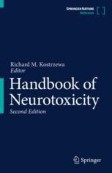Search
Search Results
-
Structure, function and drug discovery of GPCR signaling
G protein-coupled receptors (GPCRs) are versatile and vital proteins involved in a wide array of physiological processes and responses, such as...

-
GPCR Intracellular Loop Regulation of Beta-Arrestin-Mediated Endosomal Signaling Dynamics
G protein-coupled receptors (GPCRs) are currently appreciated to be routed to diverse cellular platforms to generate both G protein-dependent and...

-
GPCR-mediated EGFR transactivation ameliorates skin toxicities induced by afatinib
Many G-protein-coupled receptor (GPCR) agonists have been studied for transactivating epidermal growth factor receptor (EGFR) signaling through...

-

-
The GPCR–Gαs–PKA signaling axis promotes T cell dysfunction and cancer immunotherapy failure
Immune checkpoint blockade (ICB) targeting PD-1 and CTLA-4 has revolutionized cancer treatment. However, many cancers do not respond to ICB,...

-
Predicting Residence Time of GPCR Ligands with Machine Learning
Drug-target residence time, the duration of binding at a given protein target, has been shown in some protein families to be more significant for...
-
Susceptibility of GPCR Heteroreceptor Complexes to Neurotoxins. Relevance for Neurodegenerative and Psychiatric Disorders
G protein-coupled receptors (GPCRs) possess significant patterns of intrinsic unfolding. GPCRs have similarities to proteins that have a high net...
-
Susceptibility of GPCR Heteroreceptor Complexes to Neurotoxins. Relevance for Neurodegenerative and Psychiatric Disorders
G protein-coupled receptors (GPCRs) possess significant patterns of intrinsic unfolding. GPCRs have similarities to proteins that have a high net...
-
Selective Signal Capture from Multidimensional GPCR Outputs with Biased Agonists: Progress Towards Novel Drug Development
G protein coupled receptors (GPCRs) are a superfamily of transmembrane-spanning receptors that are activated by multiple endogenous ligands and are...

-
Monitoring GPCR-Mediated cAMP Accumulation in Rat Striatal Synaptosomes
G protein-coupled receptors (GPCRs) constitute the largest family of plasma membrane receptors, thus representing the more investigated drug targets...
-
Amplified Luminescent Proximity Homogeneous Assay (Alpha)-Based Technique to Detect GPCR Oligomers in Human Postmortem Brain
Protein–protein interactions (PPI) play an important role in cellular functions and biological processes within the organism. G-protein-coupled...
-

-
The multifaceted functions of β-arrestins and their therapeutic potential in neurodegenerative diseases
Arrestins are multifunctional proteins that regulate G-protein-coupled receptor (GPCR) desensitization, signaling, and internalization. The arrestin...

-
Isolation and molecular characterization of lumpy skin disease virus from Tamil Nadu, India during the outbreaks from 2020 to 2022
Lumpy skin disease (LSD) caused by LSD virus is a WOAH notifiable, high-impact, transboundary poxviral disease of bovines. The first official report...

-
Transactivation of receptor tyrosine kinases by purinergic P2Y and adenosine receptors
Transactivation of receptor tyrosine kinases (RTK) is a crosstalk mechanism exhibited by G-protein–coupled receptors (GPCR) to activate signaling...

-
GPCR and Alcohol-Related Behaviors in Genetically Modified Mice
G protein–coupled receptors (GPCRs) constitute the largest class of cell surface signaling receptors and regulate major neurobiological processes....
-
Study of GPCR Homo- and Heteroreceptor Complexes in Specific Neuronal Cell Populations Using the In Situ Proximity Ligation Assay
Membrane receptor, for example, G-protein-coupled receptors (GPCRs), operates via coordinated changes between the receptor expression, their...
-
GPCR-Mediated MAPK/ERK Cascade Activation in Mouse Striatal Slices
G protein-coupled receptors (GPCRs) represent the largest family of plasma membrane receptors. GPCRs are involved in a large variety of physiological...
-
Doxorubicin alters G-protein coupled receptor-mediated vasocontraction in rat coronary arteries
Doxorubicin (Doxo)-associated cardio-and vasotoxicity has been recognised as a serious complication of cancer chemotherapy. The purpose of this novel...

-
AlphaFold2 versus experimental structures: evaluation on G protein-coupled receptors
As important drug targets, G protein-coupled receptors (GPCRs) play pivotal roles in a wide range of physiological processes. Extensive efforts of...

